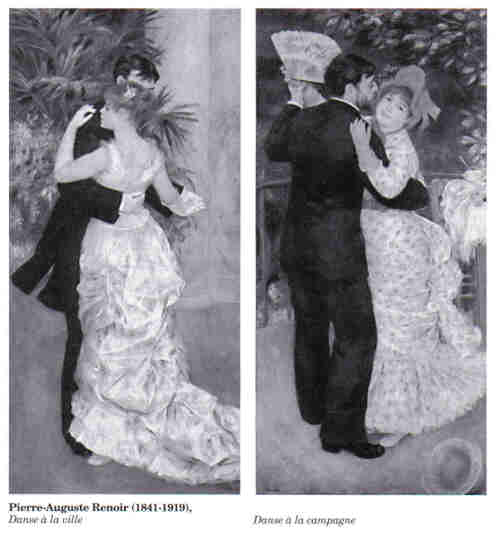Folk dances with
ballroom dance and latin dance (modern old time dance)
|
Sailor folk dances
Introduction
to cha-cha-cha dances
|
Folk dances with dance
steps and dance figures from cha-cha-cha:
|
|
Polka
now as rock-polka and the Danish Rhinelander dance now
as sailor- rhinelander
|
|
|
|
i2
|
|
Cha-cha-cha: 1950th
most popular vivid couple dance
adapted to the (Danish) folk dance structure with its predictability
and social
get-together.
By dancing
these dances you will in an enjoyable way get
a broad knowledge of the basic steps and most common figures.
Sailor
folk dances - West-Indian influence on
the traditional Danish folk dance:
Couple
dance, mixer, circle dance, country dance, 3 couple dance, quadrille =
square,
6 new dances and melodies.
Steps:
walk
walk chasse, rock-polka, dance with structure and with input inspired
by cha-cha-cha.
How did the Danish folk dances come into
being?
We got all our Danish folk dances (except one) after
input and inspiration from abroad, as foreign dances were taken in and
changed
and further developed to Danish conditions. The foreign influence is
sometimes
seen in the name, like rheinlænderpolka = Rhinelander polka, i.e.
a polka from
the land by the river Rhine.
Sometimes a dance could migrate inside Denmark, like
the dance “the little vendelbo”, a popular dance in south-east Denmark that
originated from the north-west. And in the north-west the name of the
dance
indicates that they got it somehow from abroad, e.g. by a sailor. This
type of
“import” by fiddlers is known in the coastal regions where farmers
traditionally were sailors as young.
<>
So in our dances here we imagine that the sailor has
been far away, to the West-Indies, and then come home with e.g.
cha-cha-cha.
Music for
the cha-cha-cha sailor folk dances
We here
have 8 melodies and 8 dances with cha-cha-cha
and sailor-rhinelander and rock-polka. It is rather fast melodies to
dances
with small steps, inspired by the West-Indian.
A true cha-cha-cha melody, Jesuita, is included with a
few additional notes as introduction to make it fully suitable, but it
is the intension that the other melodies
should
be used, with a definite start of dance on beat 1 (and not 2 as in
Jesuita).
The
melody Golfstrømeren (The Golf Tram) is made for
basic learning of sailor-rhinelander and rock-polka each dance step
corresponds
to a note. This style is used in the first bars in the other melodies
but then
they change in the next bars to be influenced by calypso rhythm. These
basic
steps are used together with cha-cha-cha steps and figures in the
dances: 2
couple line dance, 3 couple dance, quadrille, country dance, circle
dance
mixer.
The musicians find their own style. Maybe improving
the melodies. Adding more latin rhythm etc.
Have fun in dancing and playing.
Social dance, free
dance
The
cha cha cha dance, which after its appearance in
the west in the 1950th quickly became the most popular dance for
several years,
is a dance where you can attend a ball with your partner and dance
alone
together all evening, and even move around on only a smaller part of the ballroom. You do not need to have
any contact with the other dancers.
Folk
dance is different. With the dances here you
quickly get in contact with and mixed up with the other dancers. Folk
dance is
a very social dance.
But
in folk dance you then must dance in accordance
with the dance description not to disrupt the dance for the others.
This can then
be felt a stiff pattern.

Ice winter in
Frederikshavn in North Jutlands almost a century ago.
(The steam ferry boat for Læsø
is the small boat to the left.)
The big steamers here arrive to Northern Jutland out from the big world, with
sailors that have got inspiration from foreign cultures, e.g. new ideas
for
dances.

The modern harbour, dance on
the wharf.
Midsummer
night 1985 celebrated in a small harbour near Copenhagen, a small fishing harbour, now
mostly for leisure boats. I am here the leader of folk dance and music
to mark
the Nordic light evening by Øresund, across from Sweden.
This is a very
different situation than the one on the old harbour photo above, where
we
depended on the sailors to renew our folk dances and music. Now the
leisure
people travel around in the world and dance the local dances - or we
look them
up on the internet web.

Dance in the city and in the countryside as this French painter sees it.
You are free to decide your poise and hold here in my dances as long as
you and your partner feel comfortable.
The purpose is to have fun and enjoy yourself.
Good luck.



